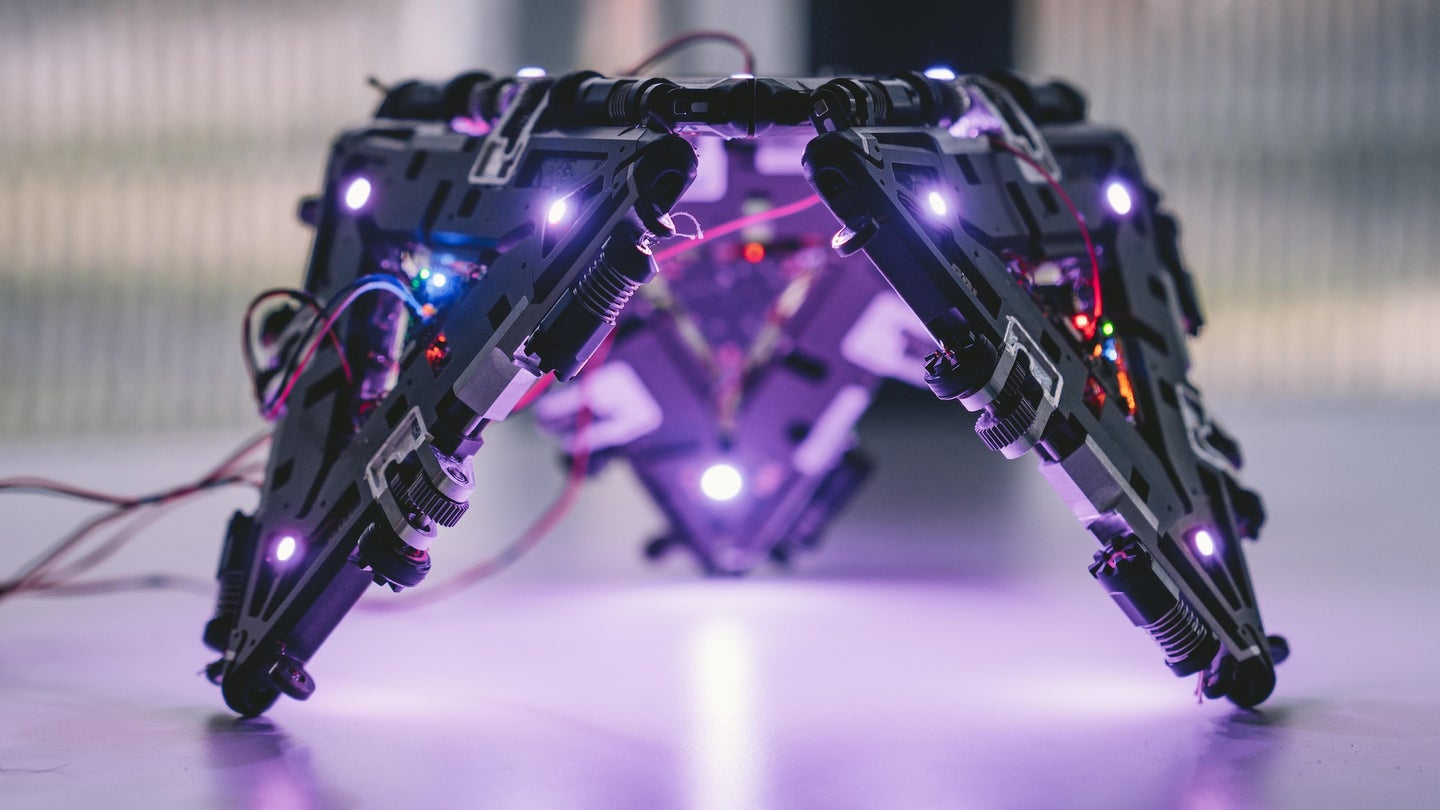
In order to keep costs low while maximizing utility, engineers are getting creative with their potential robotic cargo. As governments and private companies set their sights returning to the moon and,eventually, establishing a human presence on Mars, space-friendly robots are all the more crucial. Taking inspiration from biological swarm behaviors and geometrical patterns, researchers at Switzerland’s Ecole Polytechnique Fédérale de Lausanne (EPFL) recently showcased Mori3, a new line of shapeshifting, 2D triangular robots capable of combining to form virtually any 3D shape.
[Related: Foldable robots with intricate transistors can squeeze into extreme situations.]
As detailed in a paper published on Monday with Nature Machine Intelligence, the team’s modular, origami-like Mori3 machines “can be assembled and disassembled at will depending on the environment and task at hand,” Jamie Paik, the paper’s co-author and director of EPFL’s aptly-named Reconfigurable Robotics Lab, said in a statement.
Although prices are steadily falling, space is still at a premium when traveling to, well, space. Reaching low-earth orbit via one of SpaceX’s Falcon 9 rockets, for example, can set you back approximately $1,200 per pound of payload—therefore, the more uses you can pack into a small design, the better. And Mori3’s (or, more accurately, a team of Mori3’s) appear up to the challenge.
In the team’s proof of concept, Mori3 robots were able to shuffle around, handle and move objects, as well as interact with their users in a variety of design shapes. Instead of specializing in a single task or function, Mori3 is meant as more of an all-purpose system, forming and reforming for astronauts’ various needs, such as external station repairs, to simply transporting materials throughout a lunar base or spacecraft.
[Related: The ISS’s latest delivery includes space plants and atmospheric lightning monitors.]
In footage first highlighted by The Daily Beast, multiple Mori3 bots are shown to fuse together and alter their overall shape to form a single, walking quadrupedal machine. In another video, an array of flat, triangular Mori3’s manage to morph and position itself into the upright, three-dimensional same walking robot.
“We had to rethink the way we understand robotics,” added Christoph Belke, a robotics researcher at EPFL and one of study’s other co-authors. “These robots can change their own shape, attach to each other, communicate and reconfigure to form functional and articulated structures.”
Check out videos from EPFL showcasing a single Mori3’s 2D movement, as well as a team’s combined 3D capabilities below:
The post These 2D machines can shapeshift into moving 3D robots appeared first on Popular Science.
Articles may contain affiliate links which enable us to share in the revenue of any purchases made.
from | Popular Science https://ift.tt/yRUBEDI




0 Comments